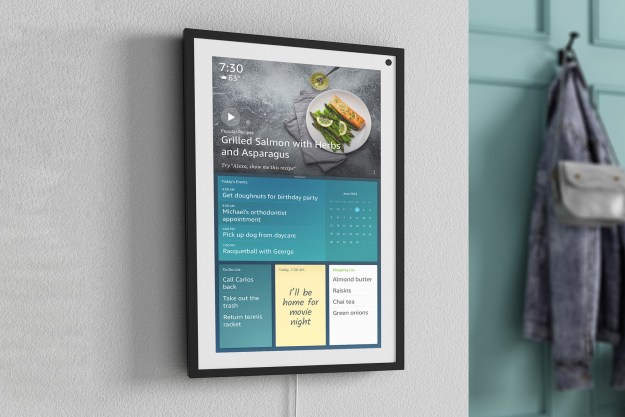Even though they’re not quite as ubiquitous in homes compared to smart speakers, the continuing affordability of smart displays make them valuable assets with far more functionality. If the report about Amazon developing a wall-mounted Echo Show is true, it certainly points to the increasing trend of smart displays being used focal hubs in the smart home. While the prospect of this smart display has its merits, I’m not convinced that it’s something you need — more so, it would be yet another display to crowd your home.
As I’m typing this, the Lenovo Smart Display 8 is in arm’s reach on my desk. It’s a perfect deskside companion with many uses, including controlling the smart lights throughout my apartment, allowing me to quickly glance at notifications about upcoming appointments, and providing a distraction as a secondary screen playing YouTube videos. There’s no logical reason for me to add yet another display to my setup, especially one that would involve being wall-mounted.

This so-called command center is reportedly going to be available in 10-inch and 13-inch options. While the latter option would become the largest smart display in Amazon’s lineup, referring to it as big is an overstatement — especially for something that doesn’t come close to reaching the sizes of today’s PC monitors. When I hear about something called a command center, I expect it to be gargantuan. This wouldn’t qualify in my eyes.
Another peculiar quality about this Echo command center that leaves me unenthused is that it needs to be mounted on a wall. Making it a permanent fixture takes away the opportunity to move it to another room. I don’t necessarily take my smart display from one room to another, but I do know some people who do. Quite frankly, the option to place it anywhere is useful because rearranging furniture and decor is bound to happen.
I prefer a more mobile solution, which has already been done with some success. Lenovo released tablets that doubled as smart displays when docked into their respective cradles and offered access to either Amazon Alexa or Google’s Assistant. This is a far more favorable interpretation because of the flexibility introduced by a tablet that can be used from place to place.

Furthermore, there’s a reason why we don’t have more televisions with built-in cameras. People by and large are just hesitant about having a camera peeking into their living rooms. While the prospect of conducting Zoom conference calls would certainly make Amazon’s Echo command center an enticing option, it would be yet another display contending for our attention. Most of my virtual conference calls are done through my laptop. Yes, the Lenovo Smart Display 8 could do the trick as well, but there’s no way a fixed smart display would be my first or second choice.
Smart displays are already command centers in their own right. In my home office workspace, though, it doesn’t receive the same level of attention as my laptop — which is already a command center of its own. There’s also the Google Nest Hub Max in my living room, which is the central room in my apartment. It’s truly what I’d consider my command center because it’s there for entertainment, smart home control, and communication. It’s difficult to infer whether this Echo command center would be vying for the same attention, but at 13-inches at the most, it’s impossible to perceive it as a command center. If Amazon wants to make a serious statement, then it would be wise to up the size with something more substantial.

Either way, people have plenty of distractions when working from home already. Nearly all of the displays in my apartment get some sort of attention, with the exception of my iPad. If that’s telling enough, a fixed smart display just doesn’t seem like it would have much purpose in my repertoire.
Editors' Recommendations
- The Amazon Echo Hub is almost the whole-home hub I’ve always wanted
- During spring cleaning, don’t forget smart home security
- Everything announced at Amazon’s 2022 Fall Event: new Echos, Fire TVs, Kindle Scribe, and more
- 5 reasons I still use the Echo Show 15 everyday
- 7 things you didn’t know the Echo Show 15 could do




